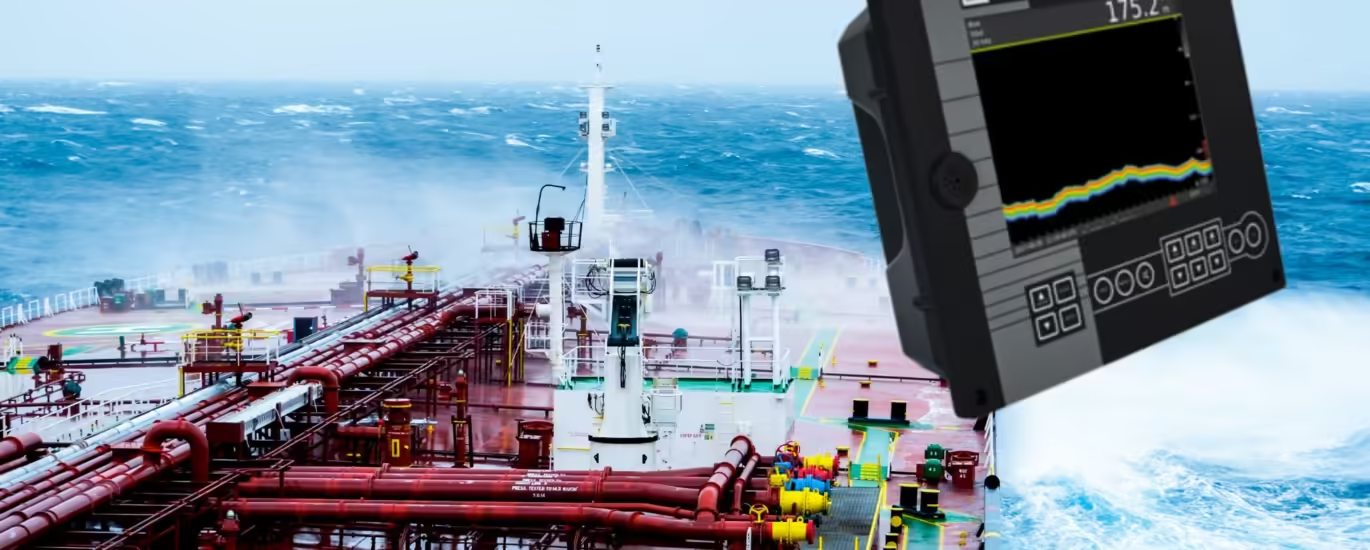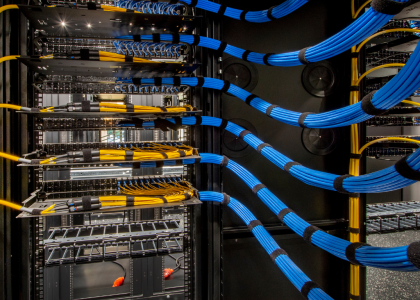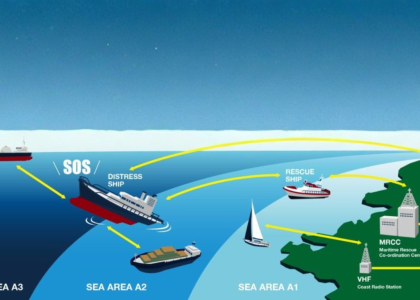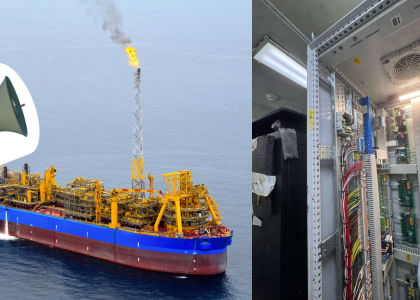An echo sounder is a sonar-based device that measures water depth by sending sound pulses from a transducer to the sea floor and receiving the echo that bounces back. By calculating the time it takes for the echo to return, it determines the distance to the bottom, enabling vessels to navigate safely through varying depths.
Key Functions of an Echo Sounder on Maritime Vessels
Depth Measurement: The primary role of an echo sounder is to measure the water’s depth under the vessel. This helps prevent grounding and aids in route planning by identifying safe navigable paths.
Seabed Profiling: Advanced echo sounders can give detailed information about the seabed’s contours and composition, beneficial for anchoring, fishing operations, and conducting surveys.
Collision Avoidance: By continuously updating depth readings, the echo sounder provides essential data to the crew, helping avoid underwater obstacles and potential hazards, especially in poorly charted areas.
Navigational Support: Echo sounders are vital in shallow waters, river channels, and harbors, where accurate depth measurement supports safe maneuvering and docking.
How Does an Echo Sounder Work?
The device consists of a transducer that emits sound waves downward into the water. When these waves hit an object or the seafloor, they reflect back as echoes. The echo sounder then calculates the time interval between the transmission and reception of the sound wave to determine the depth. High-frequency sound waves give more precise data, typically used in shallow waters, while lower frequencies are more effective in deeper waters.
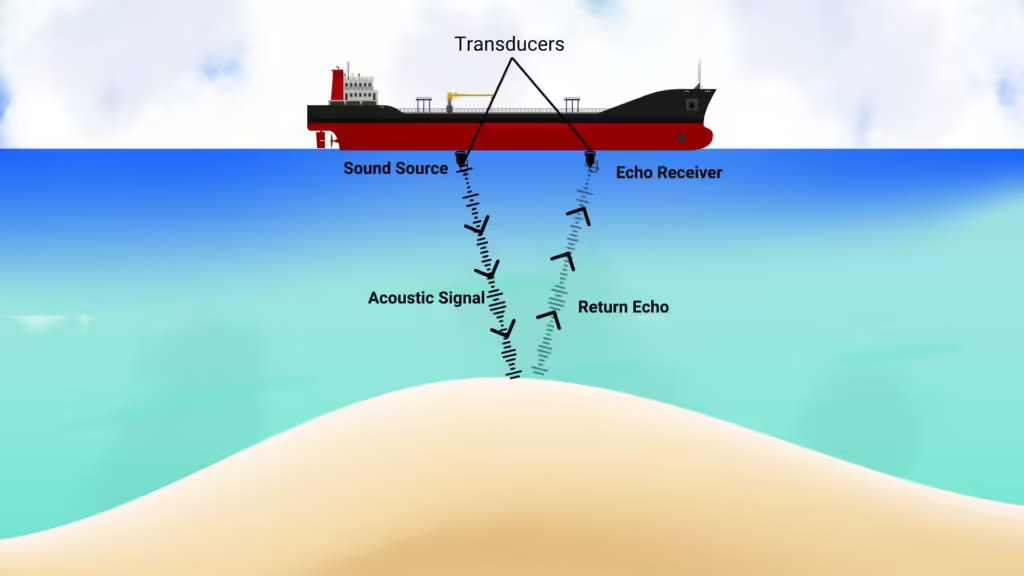
Types of Echo Sounders
Single-Beam Echo Sounders: These use a single sound pulse for basic depth readings and are common on commercial vessels.
Multi-Beam Echo Sounders: Used for detailed seabed mapping, multi-beam systems cover larger areas and provide high-resolution data, especially useful for survey vessels.
Side-Scan Sonars: Employed in specialized applications like seabed imaging and underwater object detection, particularly in exploration and salvage operations.
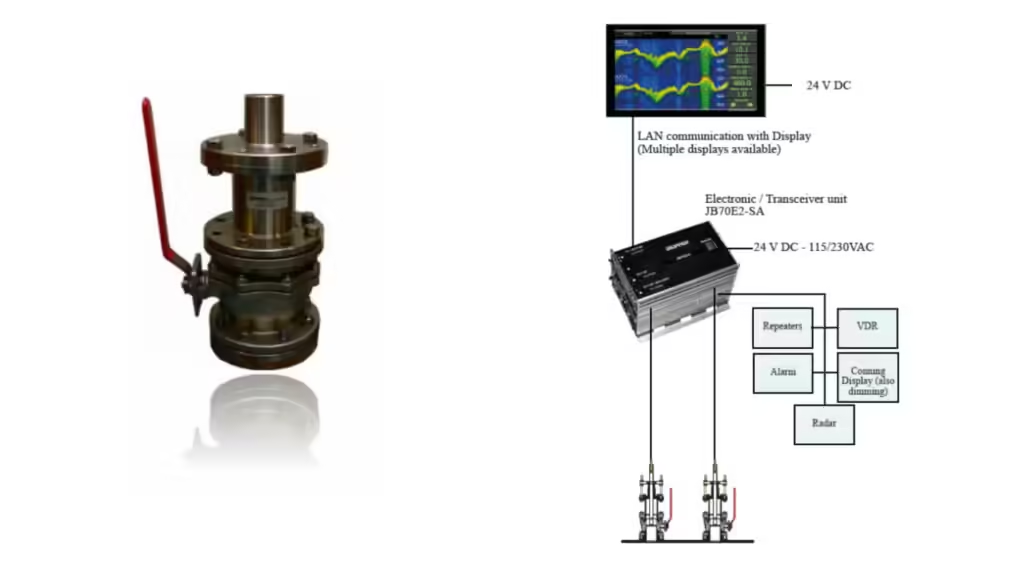
Installing an Echo Sounder System for FPSO Vessels
Understanding FPSO Requirements
FPSOs differ significantly from standard maritime vessels due to their size, role in offshore operations, and prolonged stationary positions. Echo sounders on FPSOs must be carefully configured to handle the vessel’s movements, including pitch and roll, while still delivering accurate data.
Selecting the Right Equipment
FPSOs often require dual-frequency or multi-beam echo sounders to monitor both shallow and deep waters. High-frequency transducers provide precise readings in shallow areas, while lower frequencies are ideal for deeper waters, allowing operators to monitor conditions at varying depths.
Positioning and Mounting
The transducer’s placement is crucial for avoiding interference from other FPSO systems. It’s typically mounted away from high-turbulence areas to prevent noise in the readings. For an FPSO, this may mean placing it on a specialized mounting bracket or retractable arm to protect it during maintenance or avoid damage from marine growth
Integrating with FPSO Systems
Echo sounders on FPSOs often integrate with other monitoring and control systems, such as positioning software, anchor handling, and dynamic positioning (DP) systems. This integration ensures that depth data can be used in real-time by the FPSO’s control systems, enhancing the vessel’s overall safety and operational efficiency.
Get the Right Team
Choosing the right echo sounder is only part of the equation; having the right team to install, configure, and maintain these systems is essential for maximizing their effectiveness. At Vivo Asia, we understand the critical role echo sounders play in the maritime industry and provide specialized expertise to ensure they operate at peak performance.
As specialists in marine and offshore equipment, Vivo Asia brings a unique understanding of the operational challenges faced by maritime vessels.






